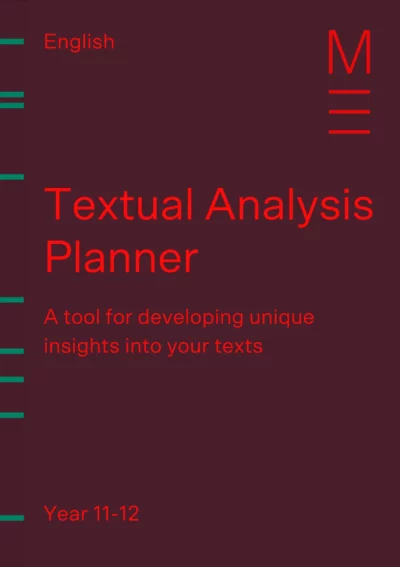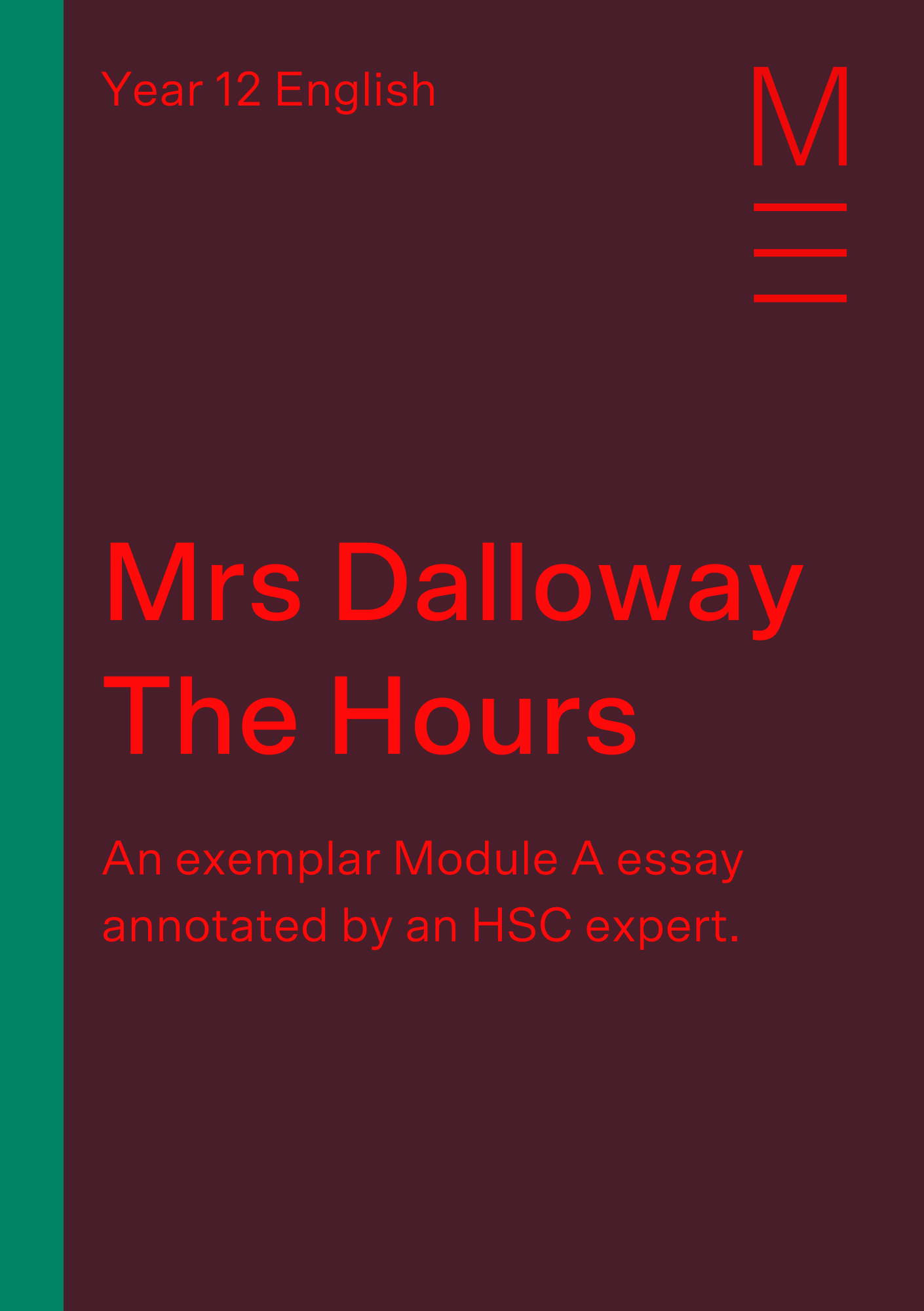Welcome to Matrix Education
To ensure we are showing you the most relevant content, please select your location below.
Select a year to see courses
Learn online or on-campus during the term or school holidays
Learn online or on-campus during the term or school holidays
Learn online or on-campus during the term or school holidays
Learn online or on-campus during the term or school holidays
Learn online or on-campus during the term or school holidays
Learn online or on-campus during the term or school holidays
Learn online or on-campus during the term or school holidays
Get HSC Trial exam ready in just a week
Get HSC exam ready in just a week
Select a year to see available courses
Science guides to help you get ahead
Science guides to help you get ahead
Is that Frankenstein with a pop-art girl? This is an example of intertextuality. This post will explain what intertextuality is, how to analyse it and how to discuss it in your essays.

Guide Chapters
Join 75,893 students who already have a head start.
"*" indicates required fields
You might also like

Join 8000+ students each term who already have a head start on their school academic journey.
Welcome to our glossary of Literary Techniques INTERTEXTUALITY post. This article is part of the English Literary Techniques Toolkit series for the HSC. We’ll explain what intertextuality is, show you what it does, provide you with some examples and walk you through the steps to analyse them.
Some common questions that students ask are:
Here, we will discuss INTERTEXTUALITY. Keep reading to find our what intertextuality is, how to identify them and how to analyse it in your essays.
Intertextuality is a powerful technique that is used by composers to create multiple layers of meaning.
It is difficult to identify intertextuality if you don’t have a wide knowledge of different texts. This is why it is important that you are continually reading and expanding your bank of books, poems, films, and plays.
Intertextuality is when a text implicitly or explicitly refers to another text, by using distinctive, common or recognisable elements of the referenced text.
An implicit reference is when the composer alludes to another text through ideas, symbols, genre or style.
An explicit reference is when the composer directly mentions, quotes or references another text in their work.
This helps shape meaning because all texts portray particular perspectives on issues or messages. So, composers refer to specific texts to enrich or extend of their message.
There are many different types of intertextuality. All of them refer to texts in different ways to produce and shape meaning.
Want to know the key to sophisticated analysis?

Level up how you analyse texts and take notes with expert strategies and templates!

Fill out your details below to get this resource emailed to you.
"*" indicates required fields
All texts deal with ideas, meanings, and perspectives.
And all texts have their own distinctive, and recognisable features.
So, to use intertextuality, composers find specific texts that explore a useful idea.
This idea can either extend, enrich, or challenge their own, depending on the purpose of the intertextual reference.
Then, they will identify a defining feature of the text (for example, the red hood in Little Red Riding Hood) and reference it in their own work.
This feature needs to be distinctively identified with the text to ensure that the intertextuality is effective. There is no point in using a feature that insignificant to the — text or is commonly used in many — texts because the audience will not be able to recognise referenced text.
All texts have certain messages and portray certain perspectives on ideas.
So, when a composer decides to reference another text, there has to be some connection between the two texts.
They might be exploring a similar idea as the referenced text, or they could challenge widely accepted views.
This can make us think and re-interpret the referenced text’s meaning, or see common ideals, issues or values that are explored across texts.
Analysing techniques can be daunting, but it doesn’t have to be. It is a systematic process that will improve the more you practice.
Let’s look at an overview of the process of identifying and analysing intertextuality.
Now we’ve got an overview of how to analyse intertextuality, let’s go through it step-by-step with an example. We will be examining a pair of Module A texts, Virginia Woolf’s Mrs Dalloway and Stephen Daldry’s The Hours.
First, let’s take a closer look at an extract from Mrs Dalloway, from pg 8.
| “Her only gift was knowing people almost by instinct, she thought, walking on. If you put her in a room with someone, up went her back like a cat’s; or she purred. Devonshire House, Bath House, the house with the china cockatoo, she had seen them all lit up once; and remembered Sylvia, Fred, Sally Seton — such hosts of people; and dancing all night; and the waggons plodding past to market; and driving home across the Park. She remembered once throwing a shilling into the Serpentine. But every one remembered; what she loved was this, here, now, in front of her; the fat lady in the cab. Did it matter then, she asked herself, walking towards Bond Street, did it matter that she must inevitably cease completely; all this must go on without her; did she resent it; or did it not become consoling to believe that death ended absolutely? but that somehow in the streets of London, on the ebb and flow of things, here, there, she survived, Peter survived, lived in each other, she being part, she was positive, of the trees at home; of the house there, ugly, rambling all to bits and pieces as it was; part of people she had never met; being laid out like a mist between the people she knew best, who lifted her on their branches as she had seen the trees lift the mist, but it spread ever so far, her life, herself. But what was she dreaming as she looked into Hatchards’ shop window? What was she trying to recover? What image of white dawn in the country, as she read in the book spread open: Fear no more the heat o’ the sun This late age of the world’s experience had bred in them all, all men and women, a well of tears. Tears and sorrows; courage and endurance; a perfectly upright and stoical bearing. Think, for example, of the woman she admired most, Lady Bexborough, opening the bazaar.” |
You need to have an extensive knowledge of different texts to identify references. However, if you don’t, don’t worry! There are other ways to do this.
Sometimes, when you read or watch a text, you notice certain motifs, symbols, quotes, or images that stand out.
There’s a possibility that it is an intertextual reference. If you don’t recognise the reference, there’s only one real way to find out.
Google it!
Yep, this is a reasonably effective way to check if the composer has used intertextuality. However, this is only effective for well-known texts where somebody has written about the references in the text you are studying. The relative youth of the interent means that not all texts are going to be catalogued.
Now, if it turns out that your text does have an intertextual reference, this is your chance to read up on the referenced text and see how it relates to your text.
From the extract above, we can see that Woolf uses intertextuality in these lines.
“Fear no more the heat o’ the sun
Nor the furious winter’s rages.”
This is a quote from Shakespeare’s Cymbeline.
This may require you to research the referenced text to find common links between the two texts.
Usually, when a composer references another text, they create a rich text with multiple layers of meaning…
This means that the two texts will discuss some common idea, message or value.
However, this does NOT mean that the two texts present the same perspective on it.
Sometimes, a composer might reference a text that contradicts their message to challenge the audience. It is up to you to decide what the themes and messages are.
As we know, Mrs Dalloway explores notions of death, mortality, and innocence; the novel is set during World War I, features a veteran – Septimus, and Clarissa, the central protagonist, has an impending fear of death.
So, what are the themes and messages explored in Shakespeare’s Cymbeline that relate to Mrs Dalloway?
Cymbeline is about a King who banishes Posthumus, a poor man of low socio-economic status for secretly marrying his daughter. What follows is a story of false identities, poisoning, war and deception; whereby the daughter runs away in the disguise of a boy, drinks poison from the Queen, goes into a deep sleep, a battle occurs, she wakes up, the Queen dies.
We can conclude from our research that the themes explored in this play are mortality, deception, innocence and death.
However, the quote itself also carries meaning.
“Fear no more the heat o’ the sun
Nor the furious winter’s rages.”
Shakespeare highlights that one should not be afraid of the harshness of nature and, subsequently, death.
So, let’s identify the common themes in both texts: death, mortality and innocence.
Learn why HSC markers would score this essay highly! Fill out your details below to get this resource emailed to you. "*" indicates required fields
Download your annotated Dalloway & the Hours essay

Download your annotated Dalloway & the Hours essay
Now that we know the common themes of both texts… we need to find the significance of the intertextual reference.
So, let’s ask ourselves these questions.
1. How does it compliment the composer’s intended message?
The allusion to Shakespeare’s text emphasises the need to be unafraid of death.
“Fear no more the heat o’ the sun
Nor the furious winter’s rages.”
We see that the fear of death can become a burden on individuals as both the heat and the furious winter can cause unbearable pain if it is not embraced.
In Mrs Dalloway, Woolf explores the different relationships people have with death to comment on how we need to be unafraid of death to ensure that we live life without any boundaries.
From this, can see that her intertextual reference directly compliments her intended message.
2. Does it deepen your current understanding and perspective of the text? If so, what is it?
Yes.
From this, we can gather that fear of death is a common experience and it is necessary that we overcome it.
Because the quote is consistently repeated throughout the novel, it serves as a constant reminder of Woolf’s message. This is how she highlights its importance.
Now, we have all the necessary ingredients to put together a T.E.E.L paragraph.
T.E.E.L stands for:
You can find a more detailed explanation of using T.E.E.L in our post on paragraph structure (this post is part of our series on Essay Writing and shows you the methods Matrix English Students learn to write Band 6 essays in the Matrix Holiday and Term courses). Let’s use this T.E.E.L to write about this example of imagery.
| Virginia Woolf uses intertextuality to draw parallels between her novel and Shakespeare’s Cymbeline. Here, the allusion to the play, “Fear no more the heat o’ the sun / Nor the furious winter’s rages” represents Clarissa’s extreme fear of death and how it places a great burden on her life, to the point where she has to preoccupy herself with parties. As such, Woolf highlights the need to be unafraid of death and embrace it to remove the burden and find comfort in it. |
Now that you know how to analyse intertextuality, step-by-step, let’s take a look at another example to ensure that you fully understand what intertextuality is and how to discuss it in your responses.
This time, let’s take a look at Stephen Daldry’s film, The Hours.
This whole film is an example of intertextuality: its plot is based on and retells Virginia’s Woolf’s Mrs Dalloway. The main characters are Clarissa Vaughn (nicknamed “Mrs Dalloway” and based on Woolf’s character, Clarissa Dalloway), Virginia Woolf, and Laura Brown.
This film explores similar themes to Woolf’s novel too: death, mortality, suffering, and escape.
Let’s see how.
We can see that the characters in this film are consistently thinking about death and mortality. All three women, Clarissa, Virginia and Laura consider suicide to escape their lives and the oppressing expectations placed on them.
However, they are not the only characters to deal with mortality.
Here, we see Clarissa’s former partner, Richard, saying his last goodbyes before he jumps to his death.
Let’s point out the similarities between the film and Woolf’s novel:
Daldry draws further intertextual connections:
Through these connections, we see how this film uses strong intertextuality to explore the themes of mortality and death. We are able to draw meaning from Woolf’s novel and apply it in the context of the film… Daldry’s use of intertextuality creates multiple layers of meaning.
Okay, now let’s put our analysis into a paragraph:
| Daldry explores one’s desire to escape pain through the various portrayals of an individual’s relationship with mortality, in The Hours. In the scene where Richard commits suicide, there are very strong intertextual references to Viginia Woolf’s novel. Clarissa’s dialogue of, “I went to buy flowers, like Mrs Dalloway” is a direct reference to the novel, where Mrs Dalloway also buy flowers to prepare for the party. This draws a parallel between both characters, emphasising their attempt to forget death and pain by distracting themselves with lively objects and events. However, Daldry also illustrates a different relationship with mortality through Richard through the contrasting lighting. The bright soft lighting on Clarissa’s face, and shadows on Richard’s face not only symbolises their different reactions to pain, but also foreshadows Richard’s death. He commits suicide to escape his suffering from AIDs. As such, Daldry’s exploration of two different relationships with mortality, highlight how human’s strong desire to escape from pain can cause them act in great measures. |
With Matrix+, we provide you with clear and structured online lesson videos, quality resources, and forums to ask your Matrix teachers questions and for feedback.
Learn more about our Matrix+ Online English course now.
Get ahead with Matrix+ Online
Expert teachers, detailed feedback and one-to-one help. Learn at your own pace, wherever you are.
The plots of Mrs Dalloway and The Hours are pretty bleak and full-on with their focus on mental health and suicide. If you feel like you need to talk to somebody about this call the Kids Helpline (1800 55 1800), Lifeline: (13 11 14 ), or Beyondblue (1300 22 4636).
Written by Matrix English Team
The Matrix English Team are tutors and teachers with a passion for English and a dedication to seeing Matrix Students achieving their academic goals.© Matrix Education and www.matrix.edu.au, 2025. Unauthorised use and/or duplication of this material without express and written permission from this site’s author and/or owner is strictly prohibited. Excerpts and links may be used, provided that full and clear credit is given to Matrix Education and www.matrix.edu.au with appropriate and specific direction to the original content.